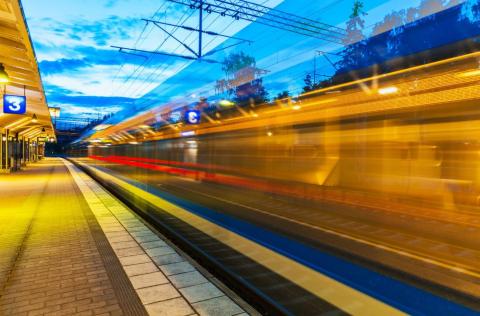
In the fast-paced world of transportation, railways have emerged as a sustainable and efficient mode of moving people and goods. Electric trains play a crucial role in this transformation, offering cleaner and more energy-efficient alternatives to traditional diesel locomotives. In this article, we delve into the intricate web of electricity supply and distribution in rail systems, exploring the technologies that power the future of rail transportation.
The Evolution of Rail Electrification
The history of rail electrification dates back to the late 19th century, with the first electrified line in Gross-Lichterfelde, Germany, inaugurated in 1881. Over the years, advancements in technology and a growing awareness of environmental concerns have driven the global railway industry towards electrification. Today, electric trains are a common sight, providing efficient and eco-friendly transportation solutions.
Types of Rail Electrification Systems
Rail electrification systems vary across regions and depend on factors such as geography, train type, and energy source. The two primary systems are overhead electrification (catenary systems) and third rail electrification.
Overhead Electrification (Catenary Systems)
This system employs wires, typically made of copper or aluminum, suspended above the tracks to deliver electrical power to the train. A pantograph, mounted on the train's roof, connects to the overhead wires, allowing for a continuous and reliable power supply. Overhead electrification is widely used in various countries, including Europe, Japan, and parts of North America.
Third Rail Electrification
In this system, an electrified rail is placed alongside or between the running rails. The train draws power through a sliding shoe or a pickup device from the third rail, completing the circuit and energizing the train. Third rail electrification is common in urban transit systems and some mainline railways, providing a cost-effective solution for shorter distances.

GET IN TOUCH
The ultimate solution for reliable power control! call us at 276-285-3841
Electricity Supply Challenges
While rail electrification offers numerous benefits, it comes with its set of challenges, particularly concerning the supply and distribution of electricity. A reliable and efficient electrification system requires careful planning and integration with the existing power infrastructure. Some key challenges include
Power Generation and Capacity
The electricity needed to power rail systems must be generated and transmitted from power plants to the rail network. The capacity of the power generation infrastructure must be sufficient to meet the demands of the electrified rail system, considering factors like peak usage and future expansion.
Infrastructure Integration
Rail electrification involves the integration of various components, such as substations, transformers, and distribution networks. Ensuring seamless integration with existing infrastructure is crucial for the overall reliability and efficiency of the system.
Voltage and Compatibility
Different rail networks may operate on varying voltage levels. Standardizing voltage and ensuring compatibility across networks can simplify operations and maintenance while facilitating interoperability between different rail systems.
Innovations in Rail Electrification
The rail industry continually seeks innovative solutions to overcome challenges and enhance the efficiency of electrified rail systems. Some notable innovations include
High-Speed Rail
High-speed rail networks are increasingly adopting electrification due to the efficiency and environmental benefits. Electric trains can accelerate and decelerate more rapidly than their diesel counterparts, making them ideal for high-speed travel.
Energy Storage Solutions
Integrating energy storage systems, such as batteries, allows railways to store excess energy during periods of low demand and release it during peak times. This helps balance the power grid and reduces strain on the electrical infrastructure.
Regenerative Braking
Regenerative braking technology allows trains to recover and store energy during braking, converting kinetic energy back into electrical energy. This innovative approach not only enhances energy efficiency but also reduces wear on braking systems.

GET IN TOUCH
The ultimate solution for reliable power control! call us at 276-285-3841
Conclusion
Electricity supply and distribution are integral components of modern rail systems, shaping the future of sustainable transportation. As the global rail industry continues to electrify, addressing challenges and embracing innovations will be paramount. Swartz Engineering remains at the forefront, contributing to the evolution of electrified rail systems and ensuring a greener, more efficient future for rail transportation.
Contact Us Today!
Are you ready to embark on a journey towards a greener and more efficient future of rail transportation? Join Swartz Engineering in shaping the evolution of electrified rail systems. Explore our innovative solutions and be part of the sustainable transit revolution. Click here to learn more and collaborate with us for a brighter tomorrow!
Our Expert Services
Swartz Engineering provides top-quality products to meet our customers' needs. We also make sure our products work reliably and safely. Our products include:
- Type 76 DC Relay
- Type 82 DC Relay
- Swartz Engineering’s Type 64 Ground Relay
- Type 32 Reverse Current Relay
- Type 150 DC
- CSM Shield Monitor
- Metal Oxide Surge Arrestors
- Transducers
- MVIS SL Slim-line Contactor
- Fully-tested Power Control Rooms
- Swartz Engineering’s Portable Substations
